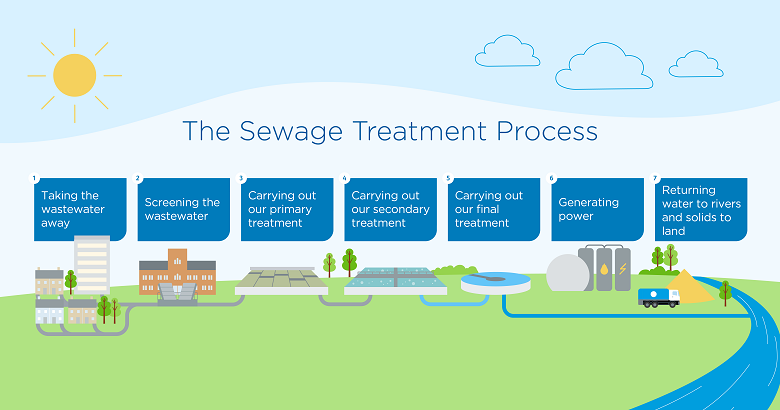Key Challenges in Urban Waste Water Treatment Strategies
Key Challenges in Urban Waste Water Treatment Strategies
Blog Article
Strategic Approaches to Improve Waste Water Treatment Efficiency and Lessen Ecological Influence
In the realm of waste water treatment, the mission for improved effectiveness and minimized environmental effect is a continuous challenge that demands tactical remedies. The combination of sophisticated therapy modern technologies, energy-efficient procedures, resource healing strategies, enhanced nutrient elimination techniques, and clever tracking and control systems stands for a diverse framework for addressing these pressing worries.
Advanced Therapy Technologies
Cutting-edge membrane purification systems have actually reinvented advanced wastewater therapy processes, considerably improving the removal of contaminants. These innovative systems work by requiring water with a semi-permeable membrane layer, effectively separating impurities from the water stream. The membrane layer's tiny pores trap contaminants such as microorganisms, viruses, and put on hold solids, permitting just purified water to travel through. This technology has confirmed to be extremely efficient in getting rid of a variety of pollutants, including pharmaceuticals, hefty metals, and organic substances, which are usually testing to eliminate with typical therapy methods.
Additionally, membrane layer filtration systems use many advantages over standard therapy techniques. Additionally, these systems are extremely versatile and can be easily integrated right into existing therapy plants or used as standalone devices for decentralized applications.
Energy-Efficient Procedures
The integration of energy-efficient procedures in wastewater therapy systems is crucial for enhancing source utilization and decreasing operational prices. One crucial approach to improving energy efficiency in wastewater therapy is the utilization of advanced aeration systems, such as great bubble diffusers or surface aerators, which can boost oxygen transfer performance and decrease power intake.
Additionally, optimizing procedure control and automation via using innovative sensing units and monitoring systems can improve total power efficiency by readjusting operations in real-time based on actual demand and conditions. Implementing power audits and frequently monitoring energy performance indicators are important practices to determine areas for improvement and track energy-saving initiatives successfully. On the whole, the fostering of energy-efficient procedures in wastewater therapy not just benefits the setting but likewise adds to lasting price savings and functional sustainability.
Resource Recuperation Techniques
With a concentrate on maximizing source use and sustainability in wastewater therapy systems, the application of source recovery techniques becomes a critical aspect in improving operational efficiency. Source recuperation methods in wastewater treatment involve the identification and removal of important resources from the waste stream, thus transforming what was as soon as thought about waste right into a beneficial asset. By executing resource recuperation methods such as nutrient removal and recovery, power generation from raw material, and the manufacturing of recyclable water, wastewater therapy plants can lessen ecological influence while maximizing effectiveness.
Boosted Nutrient Elimination Techniques
Executing advanced nutrient elimination techniques is vital for optimizing the performance of wastewater treatment systems. One of the crucial techniques made use of for improved nutrient removal is the procedure of organic nutrient removal (BNR), which includes the removal of nitrogen and phosphorus with biological procedures.

In enhancement to BNR, advanced therapy approaches such as membrane layer bioreactors (MBRs) and created marshes can likewise be used to enhance nutrient removal effectiveness. By including these advanced nutrient removal methods into wastewater therapy systems, towns and sectors can efficiently lower nutrient contamination and safeguard the atmosphere.
Smart Tracking and Control Solution
Using innovative innovation, the combination of clever surveillance and control systems reinvents the operational performance of wastewater treatment facilities. These my company systems integrate sophisticated sensors and you can try these out information analytics to constantly keep track of essential criteria such as pH degrees, turbidity, liquified oxygen, and flow prices in real-time. By accumulating and analyzing this data, operators can gain important understandings right into the performance of the therapy processes, making it possible for aggressive adjustments to enhance treatment performance.
Smart tracking and control systems additionally sustain remote monitoring capacities, allowing operators to gain access to real-time information and control features from off-site areas. This remote availability improves functional adaptability and responsiveness, enabling swift interventions in situation of system breakdowns or changes in influent top quality. The anticipating maintenance abilities of these systems assist avoid tools failings and reduce downtime, inevitably improving the overall dependability of wastewater therapy operations.
Conclusion
In verdict, calculated strategies such as sophisticated treatment modern technologies, energy-efficient procedures, resource recovery techniques, improved nutrient elimination strategies, and clever tracking and control systems play a crucial duty in improving wastewater treatment efficiency and lessening environmental effect. By implementing these techniques, wastewater therapy plants can enhance their general performance, minimize energy intake, recuperate important sources, and make certain conformity with ecological laws. These techniques are important for reliable and lasting wastewater monitoring techniques.

In verdict, tactical methods such as advanced therapy innovations, energy-efficient processes, source healing techniques, improved nutrient elimination methods, and smart surveillance and control systems play an important function in improving wastewater therapy effectiveness and minimizing ecological effect.
Report this page